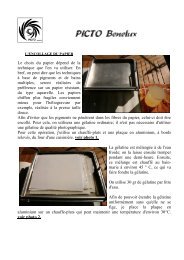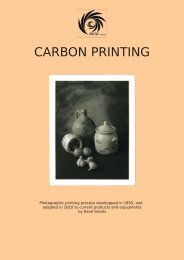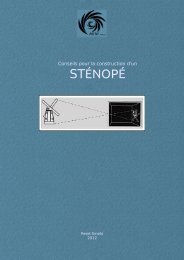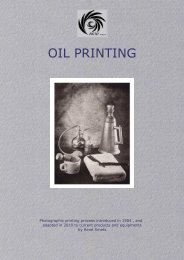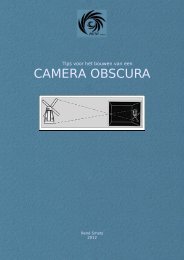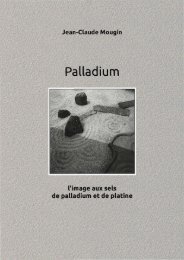Create successful ePaper yourself
Turn your PDF publications into a flip-book with our unique Google optimized e-Paper software.
INTRODUCTION:<br />
Carbon printing is a photographic process the foundation of which was laid in<br />
1855 by Alphonse Poitevin.<br />
The process relies upon the ability of an organic material (gelatin) to become<br />
insoluble in water when sensitized with dichromates and exposed to sunlight.<br />
A substrate (carbon tissue) is coated with a layer of gelatin mixed with<br />
pigment, and sensitized with potassium dichromate. A contact print is made<br />
under a large negative. The gelatin layer is then transferred to a carrier, and<br />
developed.<br />
This development is done by rinsing away the gelatin that was not hardened by<br />
light. The result is a relief layer of gelatin, showing the full tonal scale of the<br />
negative, from paper white to maximum black, on the final paper support.<br />
Carbon printing is one of the few processes rendering all the details of the<br />
negative in the final print.<br />
Explanations of the above will be based on texts, pictures and drawings. Don't<br />
be impressed by the sometimes complicated equipment I built for this;<br />
everything can be carried out in a simple way, using simple tools.<br />
I have been working for months on the whole process, but considerable time<br />
was spent on the more or less successful building of several pieces of<br />
equipment. The taking of pictures, their digital processing and several<br />
drawings also took quite some time.<br />
I did thoroughly enjoy this, and am very pleased to share my findings with all<br />
those interested in the process. Questions are welcome at any time, and I'll try<br />
to answer them to the best of my abilities.<br />
The process will be explained in seven stages, each of them being presented<br />
with its own description, formulas, pictures and drawings.<br />
The seven stages are:<br />
1. making a large negative<br />
2. sizing watercolour paper<br />
3. mixing and coating a pigmented gelatin layer<br />
4. sensitizing<br />
5. exposure<br />
6. developing<br />
7. drying<br />
8. finishing



